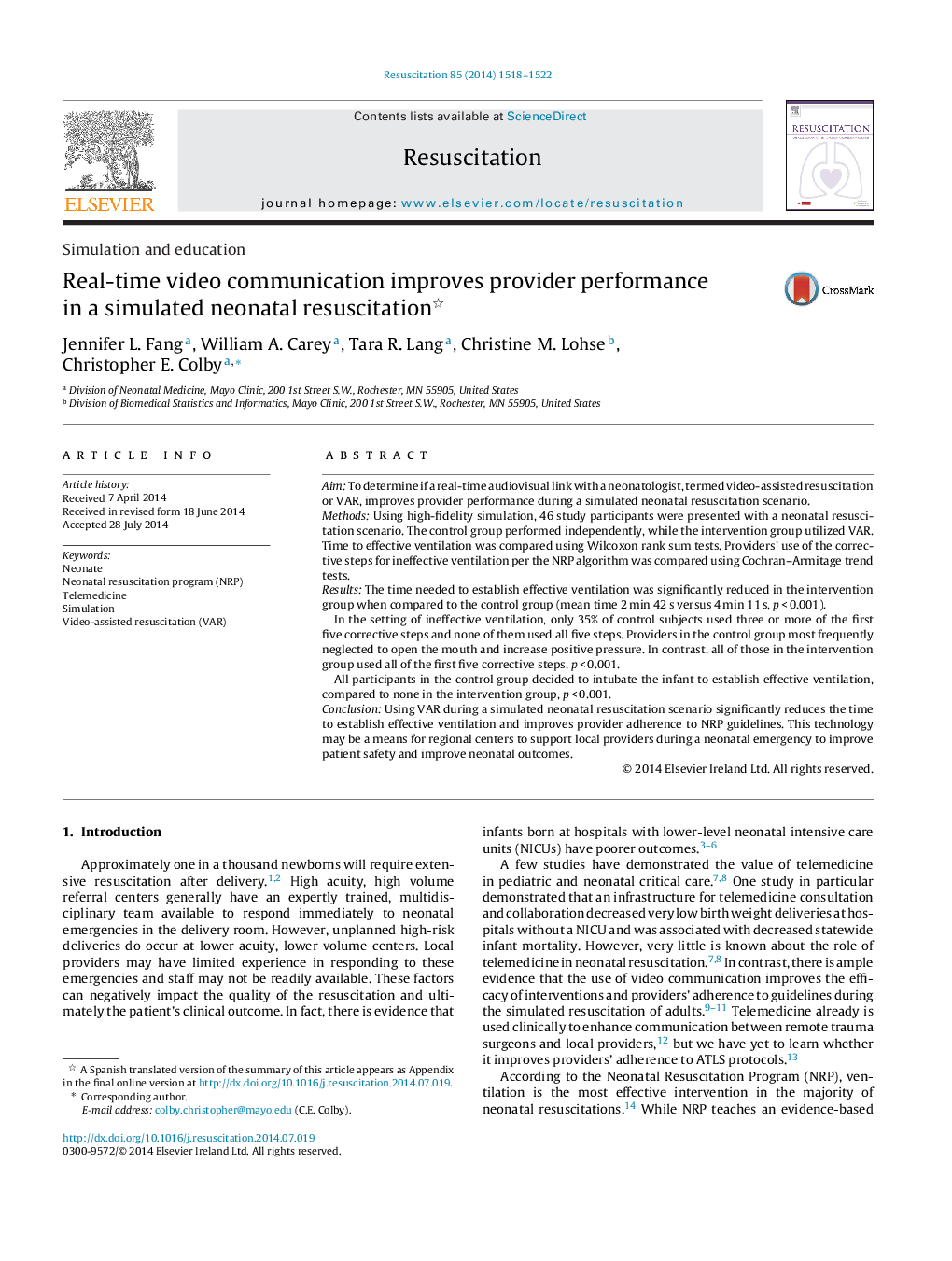| Article ID | Journal | Published Year | Pages | File Type |
|---|---|---|---|---|
| 5998198 | Resuscitation | 2014 | 5 Pages |
AimTo determine if a real-time audiovisual link with a neonatologist, termed video-assisted resuscitation or VAR, improves provider performance during a simulated neonatal resuscitation scenario.MethodsUsing high-fidelity simulation, 46 study participants were presented with a neonatal resuscitation scenario. The control group performed independently, while the intervention group utilized VAR. Time to effective ventilation was compared using Wilcoxon rank sum tests. Providers' use of the corrective steps for ineffective ventilation per the NRP algorithm was compared using Cochran-Armitage trend tests.ResultsThe time needed to establish effective ventilation was significantly reduced in the intervention group when compared to the control group (mean time 2 min 42 s versus 4 min 11 s, p < 0.001).In the setting of ineffective ventilation, only 35% of control subjects used three or more of the first five corrective steps and none of them used all five steps. Providers in the control group most frequently neglected to open the mouth and increase positive pressure. In contrast, all of those in the intervention group used all of the first five corrective steps, p < 0.001.All participants in the control group decided to intubate the infant to establish effective ventilation, compared to none in the intervention group, p < 0.001.ConclusionUsing VAR during a simulated neonatal resuscitation scenario significantly reduces the time to establish effective ventilation and improves provider adherence to NRP guidelines. This technology may be a means for regional centers to support local providers during a neonatal emergency to improve patient safety and improve neonatal outcomes.
